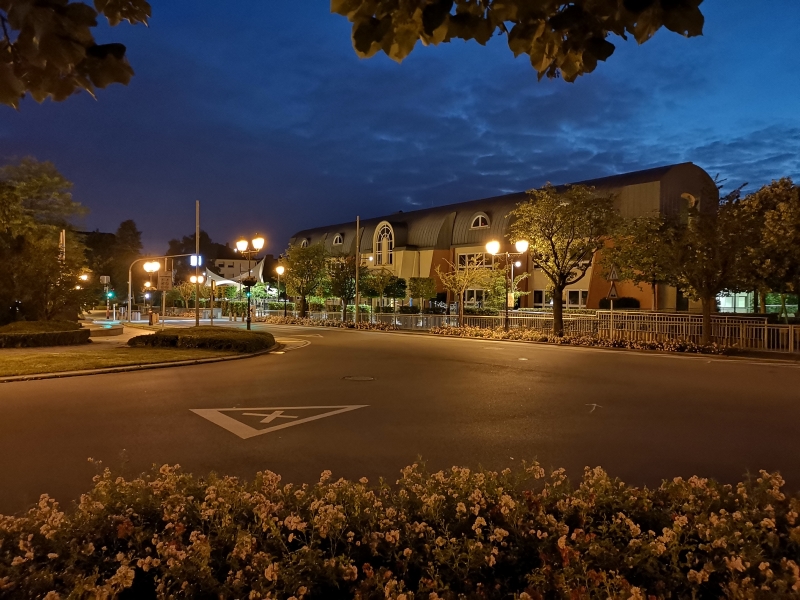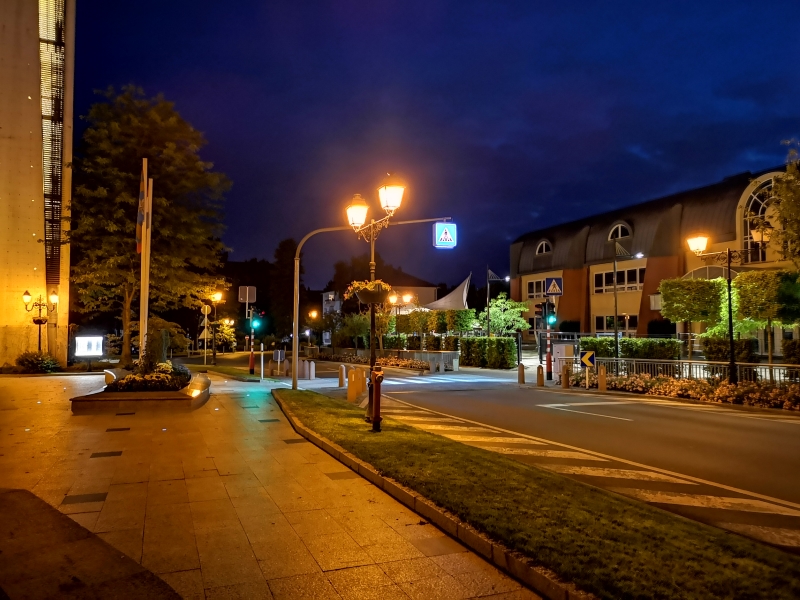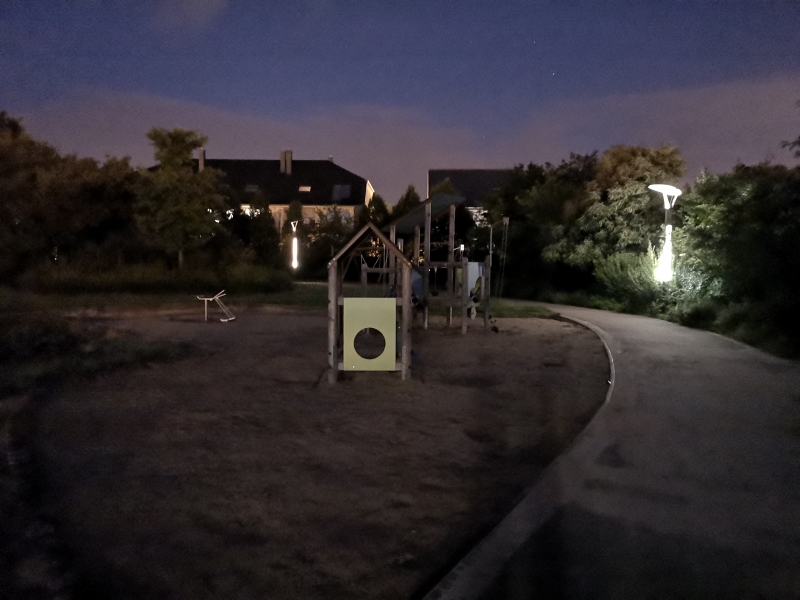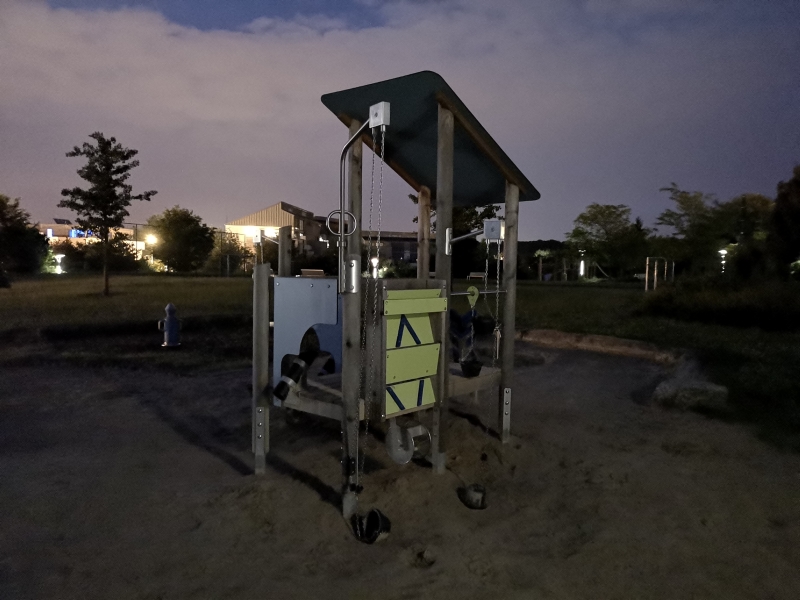The Huawei P20 & P20 Pro Review: Great Battery Life & Even Better Night Vision
by Andrei Frumusanu on June 15, 2018 11:00 AM ESTCamera - Low Light Evaluation
Low-light photography is one area the where the P20 Pro and P20 promised to bring great improvements. On the P20 Pro this is largely achieved through the ability of the sensor to do pixel binning and thus combine 2x2, meaning four, physical pixels into a single logical pixel. In theory this improves light sensitivity of the sensor by 4x and equivalent to a sensor with 2µm pixel pitches, which would make it by far the most sensitive sensor in smartphones.
Another feature to complement the improved low light capture and processing abilities of the P20s is a much improved “Night” mode. This was a feature which was present in Huawei cameras for some time now, essentially it is a multi-frame long-exposure capture mode that does computational combination of the shots into a single resulting high exposure shot. The difference with the P20 versus past implementations is the fact that the algorithm has now substantially improved shake compensation, meaning it’s now actually usable in handheld mode without a tripod and it will still come out sharp.
[ P20 Pro ] - [ P20 ] - [ P10 ]
[ Galaxy S9+ ] - [ iPhone X ] - [ Mi MIX 2S ] - [ Pixel 2 XL ]
Starting off with the first scene after sundown, we see that the P20 Pro’s 40MP shooting mode becomes very uncompetitive in low light due to its 1µm pixel pitch, and although both shots opt for the same exposure time and ISO, the 40MP clearly suffers from blurriness and lack of detail.
The P20 Pro’s 10MP shot is able to offer much better dynamic range and thus also better contrast than the Galaxy S9 or for that matter any of the other comparison devices. The P20 also does extremely well in terms of exposure, coming very similar to the P20 Pro, but having a noticeable disadvantage in terms of detail retention.
[ P20 Pro ] - [ P20 ] - [ P10 ] - [ Mate 10 Pro ]
[ Galaxy S9+ ] - [ iPhone X ] - [ Mi MIX 2S ] - [ Pixel 2 XL ]
In this shot the P20’s were the only phones to have sufficient dynamic range to now blow out too much of the blue street crossing sign as well as the left message board. The P20 again posts very similar exposure as the P20 Pro – but lagging behind in terms of overall detail. While the P20’s won in dynamic range, they lose out in terms of detail retention against the competition. Unfortunately all of my S9 shots ended up out of focus for some reason so that shot should only be used as a comparison in terms of exposure.
[ P20 Pro ] - [ P20 ] - [ P10 ] - [ Mate 10 Pro ]
[ Galaxy S9+ ] - [ iPhone X ] - [ Mi MIX 2S ] - [ Pixel 2 XL ]
In this scene, the P20 Pro outright flexes its muscles as it’s able to be the uncontested winner in terms of dynamic range, exposure, colour balance and detail retention by a large margin over all other phones. The P20 follows the P20 Pro in terms of exposure, but its detail retention is no better than competing smartphones.
Extreme low light photography
Generally for the P20 Pro, the less light there is, the better it will perform when compared to the competition. So stark is the difference in light capture capability, that generally there’s very little the other phones can do. I decided to have a little fun and throw the phones into what is essentially impossible scenarios where you wouldn’t expect a normal camera, yet alone a smartphone to perform.
[ P20 Pro ] - [ P20 ]
[ P10 ] - [ Mate 10 Pro ]
[ Galaxy S9+ ] - [ iPhone X ] - [ Mi MIX 2S ] - [ Pixel 2 XL ]
In this first scene there’s little to talk about existing phones as they mostly aren’t able to capture much at all besides some bushes around the light post. The P20 and P20 Pro on the other hand are able to resolve enough that we can actually make out what’s in the scene. The night mode on both phones demonstrate just what is possible in terms computational photography and the results are impressive.
On the P20 Pro in particular is particularly able to resolve a stupid amount of detail while this effectively was a 6 second handheld exposure.
But the real impressive shot is actually the regular 10MP mode – the camera here kicked in into high ISO mode and the resulting shot is a 1/4th second exposure at ISO51200, essentially a first in a smartphone.
[ P20 Pro ] - [ P20 ]
[ P10 ] - [ Mate 10 Pro ]
[ Galaxy S9+ ] - [ iPhone X ]
The second extreme low light scene has just a little more light as it’s being faintly illuminated by the dim walkway light. Again the P20 Pro’s 10MP mode shot results in a 1/4th second exposure at ISO51200 and the result is just astounding, and pardon the pun, simply night and day when compared to other phones. Even though the P20 doesn’t have any special light capture hardware, in Night mode it still manages to vastly outperform the competition. Funnily enough, the Mate 10 performs really well in terms of exposure in its Night mode here, but as it lacks the shake compensation feature of the P20’s, the resulting image is quite a blurry mess, and why that mode was generally unusable in the past unless you put the phone on a tripod or fixture.
Generally the P20 and P20 Pro impressed in low-light capture. The P20 doesn’t have any special hardware so most of its quality improvement are solely due to software processing improvements. Night mode in particular as a concept isn’t anything that’s bound to any hardware configuration so it’s fantastic to see Huawei push innovation and evolving it into something really special.
In terms of actual light capture, the P20 Pro’s massive sensor is just without competition. Both the hardware and the software processing make this easily the most competitive smartphone in low-light scenarios. At high ISO settings, we’re seeing astounding and never-before-seen results from a smartphone that really pushes the envelope of what can be done in a mobile device.













































81 Comments
View All Comments
sonny73n - Sunday, June 17, 2018 - link
Anyone from the US can purchase any phone online, from eBay or Aliexpress.
Your ideal government has a stupid patenting system. Everyone suing everyone’s ass. Crooks get rich by buying patent license and resale them. No wonder a new iPhone costs more than 3 times the actual cost of itself, manufacture and labor included.
If Americans aren’t so financially irresponsible, other countries would never want to go thru troubles to sell their products here.
prisonerX - Friday, June 15, 2018 - link
I think notches are great. The top of the phone is a great place to put the earpiece, sensors and camera along with the status symbols on either side. Including it in the background is ugly though.beginner99 - Saturday, June 16, 2018 - link
Nice small bezel. But again too large + on-screen buttons. no thanks.mayankleoboy1 - Saturday, June 16, 2018 - link
Slightly off-topic:What is the GTurbo(GPU turbo) thingy they have announced? Sounds something like automatic quality/resolution reduction to increase FPS, or reduce FPS to save battery.
I am very suspicious of software that automagically improves performance.
levizx - Saturday, June 16, 2018 - link
And you sound like a judgmental piece of sh*t who base your option on something pulled out of your a**.GPU Turbo has been out for days, and compared to P20/Mate10, Honor Play shows ZERO degradation on image quality/resolution.
kingson K - Saturday, June 16, 2018 - link
I won't buy any mobile made in commie china, they have lots of hacking deviceslevizx - Saturday, June 16, 2018 - link
That leaves you with only Samsung SONY and LG.levizx - Saturday, June 16, 2018 - link
Enjoy your life in you tinfoilGaysDisgustMe - Saturday, June 16, 2018 - link
Agreed, China can gft.thesloth - Saturday, June 16, 2018 - link
“As I did in the Galaxy S9 review, I have to call out Huawei on removing the headphone jack...”The S9 has a headphone jack, as far as I’m aware.